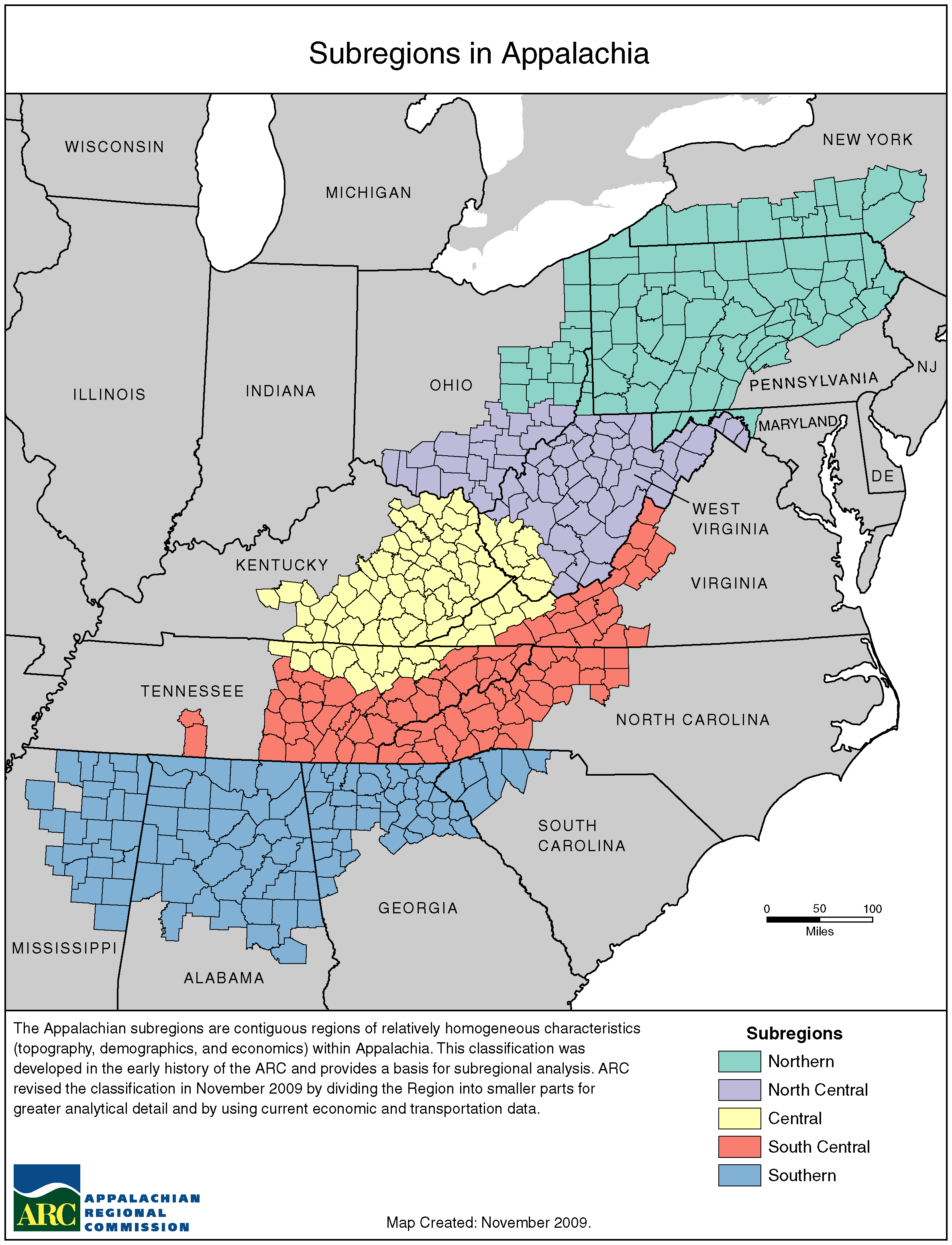CENTRAL APPALACHIA
A SNAPSHOT OF THE REGION TODAY
Central Appalachia is the heart of the Appalachian region, located within parts of numerous mountain chains, including the Blue Ridge, the Cumberlands and Alleghenies. The region is composed of West Virginia, Eastern Kentucky, Southwest Virginia, East Tennessee and Western North Carolina.
According to most recent census data, the 29,773 square mile area is home to nearly 2 million people, over 30% of whom are under the age of 241. The region’s forests and ecosystems are some of the most biodiverse in the world, and though the land has always been rich in natural resources including coal, timber and natural gas, outside industrial interests have kept the region’s people poor.
Today, over twenty percent of the region’s population lives under the poverty line, which is defined as making less than $1,700 per month². The region faces challenging problems with education, healthcare, employment and environmental devastation, particularly the economic and social impact of mountaintop removal coal mining.
THE STORY OF THE PEOPLE
The region’s first inhabitants, the Cherokee, made a great contribution to the region’s storytelling, agriculture, and other lifeways and left a haunting presence in the region after their forced removal in the mid-1800s, better known as the Trail of Tears.
Although many of the region’s later settlers were white, Appalachia has never been exclusively white and the region’s population has always been diverse. The contribution of other racial and ethnic groups in Central Appalachia has been greatly neglected by scholars and those who study the region, particularly the considerable impact made by African-American culture, including the gift of the most recognizable mountain instrument, the banjo.
The Latino community has grown rapidly and enriched the culture by living and working in the mountains in recent years, with their total presence in the region increasing by 120% according to the most recent census. In the past, industrial coal mining, logging and the expansion of the railroad brought a vast, diverse group of immigrants to the mountains who shaped the region’s identity.
STEREOTYPES
Since the local color literary movement of the early 1900′s, writing about the region has often been misguided and filled with negative stereotypes which portray Appalachians as barefoot, backward, uneducated people of the past. Positive stereotypes also surround the public perception through the fascination with the region’s folk traditions in agriculture, music, arts and crafts.
The region’s skilled artisans are renowned for their beautiful work, though they are seen as “untrained,” and the region’s musicians have created a distinctive, well-loved sound that draws on many cultures. The 1960’s federal government-led War on Poverty brought Appalachia back into the public eye with its widespread media attention which exposed the struggles of the region without consistently explaining its complexities.
Modern media coverage about the region perpetuates old stereotypes, adding that Appalachia is a place of drug addiction, public assistance dependency, conservative religion and politics and racial homogeneity.



STAY’S APPALACHIAN ALTERNATIVE
Despite the stereotypes and misinformation that have been prevalent about the region, there is a young and growing youth population that is taking pride in our region’s past, investing in our region’s present, and making strides for our region’s future. STAY works to both recognize and affirm Appalachia’s rich, complex history while also staying in tune with the stories, issues, and people that make Appalachia what it is today.
Through our collective efforts to connect, organize, and build community with other youth activists in the region, STAY hopes to write a new page in Appalachia’s history and to ultimately make the place we call home a place of equity, community, and opportunity for all.
¹ The Appalachian Region in 2010: A Census Data Overview. Kelvin Pollard, Linda A. Jacobsen
http://www.prb.org/pdf12/appalachia-census-chartbook-2011.pdf
² “About Central Appalachia.” The Appalachian Community Fund.
http://www.appalachiancommunityfund.org/html/aboutcentralA.html
By: Sam Gleaves


